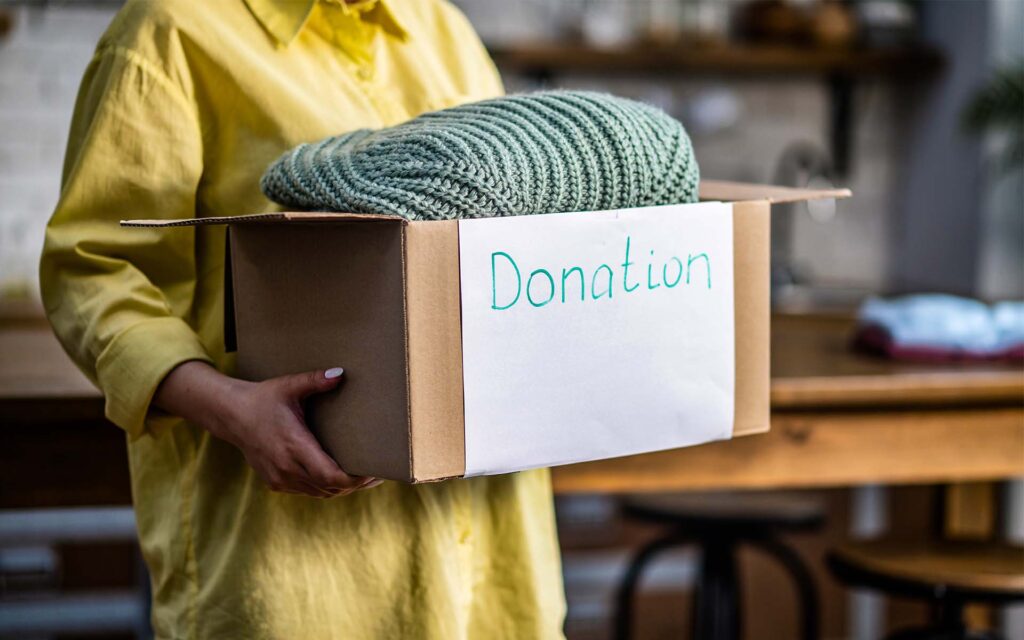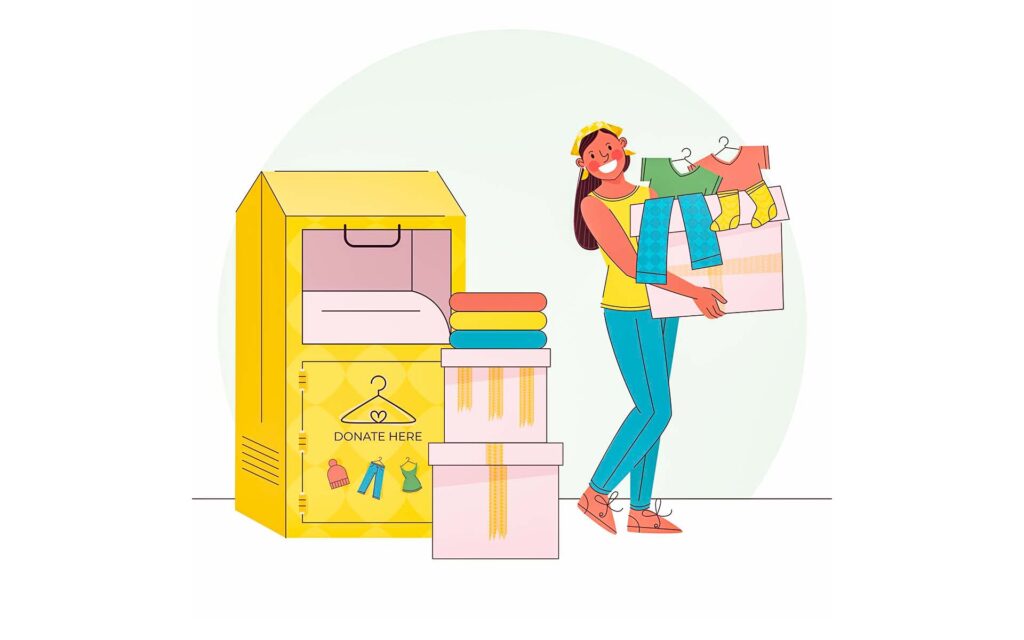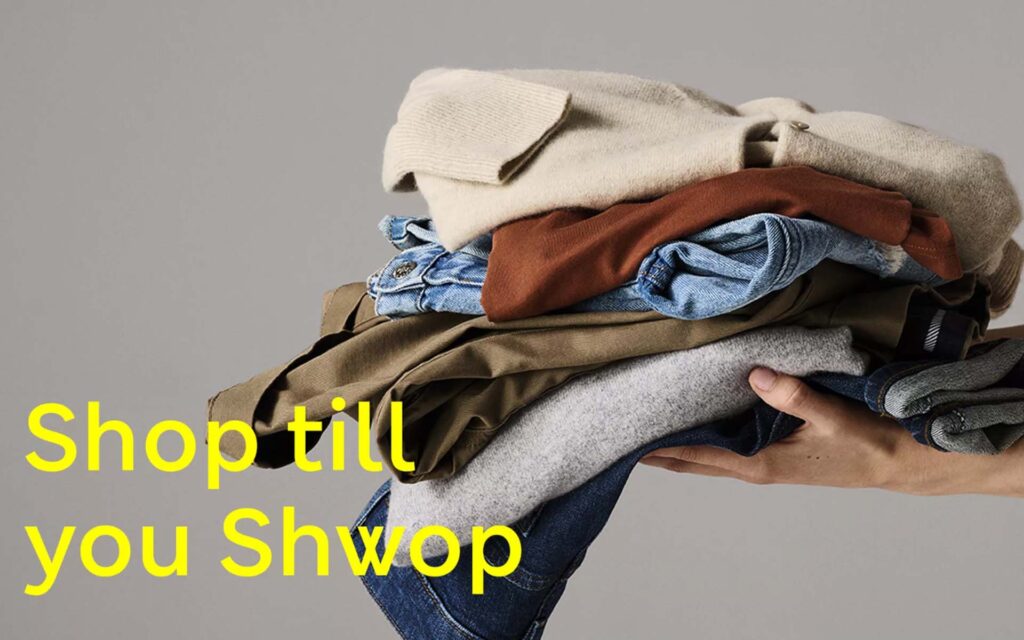According to a McKinsey & Co. consulting firm report, on average a person buys 60% more garments than 15 years ago, while each garment is kept only half as long.
Garments in good condition are often reused through various alternatives. This reduces the use of resources needed to manufacture new garments. At the same time, the amount of textile waste is reduced.
To meet sustainable goals, there are different ways of collecting garments to give them a second life. But what are the ways to dispose of them?

Donation
Donating to a charity is one of the options for reusing used clothing.
Many of the institutions have garment garbage cans or make their own home collections.
Some of these organizations collect for direct delivery to people in need. Others resell the collected items through their charity stores to raise funds, or send unsold donations to green textile recycling centers.

Resale
Another way to ensure that the garments have a second life is to sell them through a second-hand resale platform such as Vestiaire Collective, Poshmark, Farfetch, Depop, among others.
Vestiaire Collective, for example, once the item is purchased, sends the seller a prepaid shipping label to print and stick on the package to be shipped.
In the case of Farfetch Second Life, once the item is sold, a free pickup is arranged with the seller. Once the team receives and verifies the item, the seller gets a credit on their Farfetch account.
Government pickup
Many city governments offer garment and textile collections to facilitate the proper management of unwanted garments.
By distributing identified garbage cans in strategic locations, they allow for the donation of garments and accessories. They are then separated for different destinations if reuse is possible or, if not possible, they are recycled.
The purpose of this service is to give a second life to old garments and accessories in good condition that are no longer in use.

Collection programs
An increasing number of firms have a collection system that allows consumers to dispose of their used garments.
Climate action NGO Waste and Resources Action Programme (WRAP) reported that the number of in-store and online collection systems between 2021 and 2022 doubled.
Through these recycling programs, shoppers place items in collection garbage cans. They are found in stores or mailed to them. The firms sort and repair them for use in other collections or for recycling in some other way.
They also usually indicate what the purpose of the donations is. For example, through ZARA PRE-OWNED, Zara commits to separate, resell, or donate used clothing. Nike with Re-Creation recycles and redesigns donated products. H&M accepts garments not only from its own brand to give them a second life. It transforms them into other products or recycles them for further use as insulating materials.
When a shopper chooses to buy from a firm with a collection program, they get compensation such as a discount on their next purchase after donating.
However, Fashion Revolution’s Fashion Transparency Index 2023 revealed that collection programs are not as promising. Only 28% of firms with such a program reports what happens to the garments they take back.
Third-party collection
With the growth of collection programs, many firms have taken the risk in-house. Others have partnered with third-party companies. These are in charge of collection, sorting, resale or recycling. We know for example the case of the multinational Marks & Spencer who has launched together with Oxfam, “Shwopping”.

Trucos de recuperación
A research study by the Changing Markets Foundation asked to what extent recovery systems deliver on their promises and effectively address the waste problems generated by the fashion industry.
It was conducted between August 2022 and July 2023. Twenty-one good-quality garments were tracked. The brands investigated were Boohoo, C&A, H&M, M&S, New Look, Nike, Primark, The North Face, Uniqlo, and Zara, deposited in stores in Belgium, France, Germany, and the UK.
After 11 months of monitoring to determine what actually happens to the garments beyond the deposit container, the journey of the garments was categorized into four groups:
- Recycled or destroyed. 7 items were promptly destroyed. They were either thrown in the trash or recycled, either as filler, as cleaning rags or, in one case, burned for energy in a cement plant. All this despite the fact that the items were in good condition.
- Resold in Europe. 5 garments found a second life in a thrift store or with a buyer from the same continent.
- Lost in limbo. Multiple items remained for months in undetermined locations and warehouses. In some cases, they never left their original delivery location.
- Shipped to Africa. Several items entered secondhand markets in countries with inadequate waste management systems to handle textile waste and may end up in a landfill.
To conclude
The findings showed little traceability and control over what happens to returned garments. This suggests that the outsourced companies focus more on waste disposal and delegating the problem. They do little work on finding new homes for the items in Europe.
While take-back systems may appear to promote sustainability, they are often a form of greenwashing. This allows brands to maintain a positive image by making consumers believe they are making a responsible choice.
When a benefit is given to the buyer who donates used garments, it also encourages further consumption.





